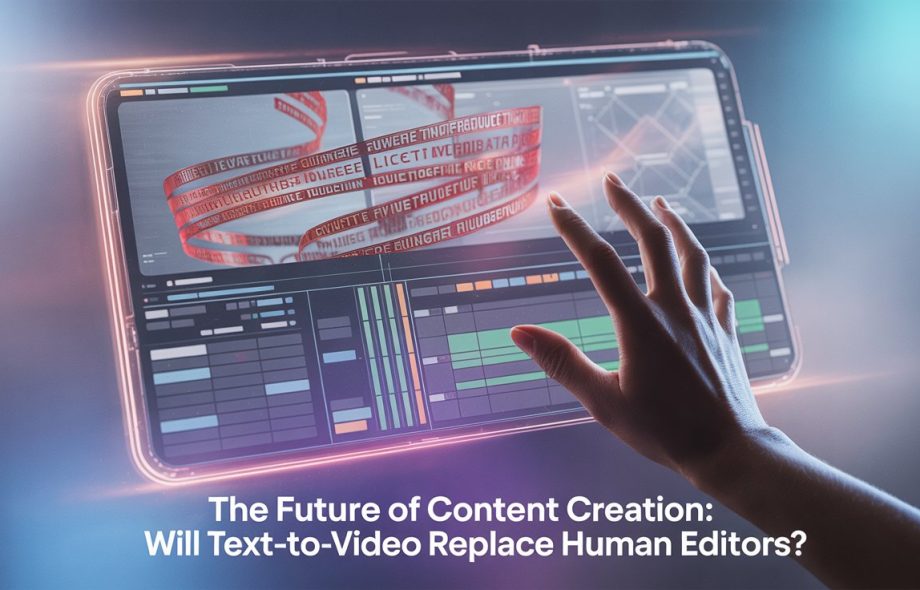In recent years, artificial intelligence has rapidly reshaped the landscape of digital content creation. Among the most transformative innovations is text-to-video technology—AI systems capable of generating full-motion videos directly from text prompts. What once required teams of writers, editors, videographers, and post-production experts can now be initiated with a single typed sentence. But as these tools become increasingly sophisticated, one critical question emerges: Will text-to-video AI replace human editors?
What Is Text-to-Video Technology?
Text to video technology enables users to create video content by simply inputting written descriptions. These systems leverage large language models, diffusion models, and image-to-video synthesis to transform prompts into coherent visual sequences. Tools like OpenAI’s Sora, RunwayML’s Gen-2, and Steve AI are leading this innovation, producing short clips with surprising realism and fluidity.
The Allure of Automation
The benefits of text-to-video systems are hard to ignore:
- Speed: What once took days or weeks can now take minutes.
- Cost Efficiency: No need for camera equipment, actors, or editing suites.
- Accessibility: Non-technical users can create videos without prior experience.
- Scalability: Marketers and educators can produce multiple variations of content quickly.
These advantages make AI-generated videos especially appealing in fast-paced industries like advertising, e-learning, and social media.
The Role of Human Editors Today
Human editors bring more than technical skill to the table. Their value lies in narrative intuition, emotional intelligence, and cultural awareness. Editors shape raw content into emotionally resonant stories, adjusting timing, pacing, music, transitions, and tone to craft a message that connects with audiences.
Additionally, editors navigate complex creative feedback loops, ensuring that videos align with brand identity, social norms, and audience expectations—skills that AI is far from mastering.
The Limitations of Text-to-Video AI
Despite its promise, current T2V models face critical limitations:
- Lack of Precision: AI may misinterpret prompts, especially vague or nuanced language.
- Limited Context Awareness: AI struggles with long-term consistency in storytelling, such as maintaining a character’s appearance or plot continuity.
- Creativity Constraints: While AI can remix existing styles, it doesn’t truly “create” with intention or artistic vision.
- Ethical Risks: Deepfake potential, biased outputs, and intellectual property concerns continue to raise red flags.
Collaboration, Not Replacement
Rather than viewing text-to-video AI as a threat, many experts believe it will augment rather than replace human editors. In this hybrid model:
- Editors become AI directors, guiding tools to generate raw content and then refining it.
- Previsualization and prototyping are accelerated, helping filmmakers and agencies visualize concepts faster.
- Smaller teams can punch above their weight, allowing indie creators to compete with bigger studios.
Just as Photoshop didn’t replace graphic designers, but redefined their toolkit, text-to-video will likely redefine what it means to be a video editor.
Looking Ahead: The Editor’s Evolving Role
As generative video tools mature, the editor’s role may shift toward:
- Prompt engineering and AI supervision
- Ethical decision-making in content creation
- Creative storytelling and emotional design
- AI content curation and quality control
These are distinctly human skills—ones that algorithms alone cannot replicate.
Conclusion
Text-to-video technology marks a bold leap forward in content creation. But rather than spelling the end of human editors, it signals a new era of human-AI collaboration. Editors who embrace these tools, while leaning into their uniquely human strengths, will not only survive this transformation—they’ll thrive in it.
 :
https://www.pinterest.com/
:
https://www.pinterest.com/

